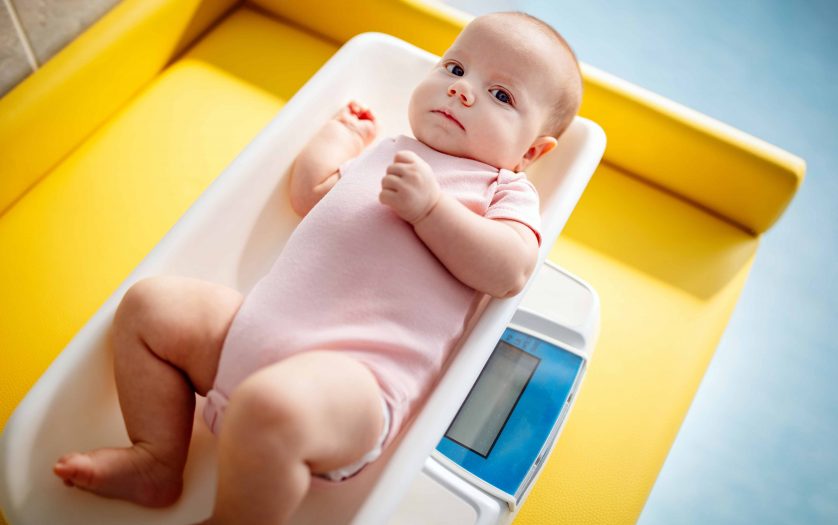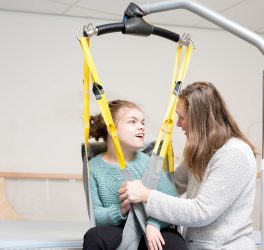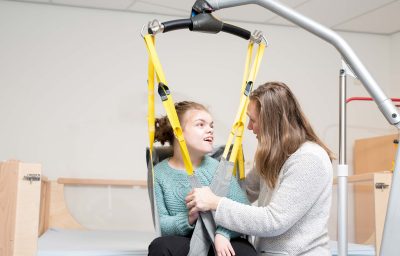
Oxford University is initiating a population-based newborn screening study in the Thames Valley. This study aims to make it possible to detect SMA within days of birth, before symptoms develop, so that any affected newborn can receive diagnosis and treatment at the earliest possible opportunity.
It is hoped that it will pave the way for a national newborn screening that will save about 70 babies each year in the UK from disability.
Spinal muscular atrophy (SMA) is a rare, but treatable, genetic disease affecting approximately 1 in 10,000 births, and it typically presents in infancy and early childhood. SMA is caused when part of a gene is found to be missing (deletions) or disrupted (mutations). This gene is called survival motor neuron 1 (SMN), which is important to maintain motor neurons (nerve cells). SMA progressively, and irreversibly, destroys the nerve cells in the brain and spinal cord, that control movement. This leads to progressive and irreversible muscle weakness.
The conditions can begin within the first 3 months of a child’s life. In children with the most common and severe type of SMA, 95% of all motor neurons can be lost before the age of 6 months. Most children with this type of SMA, if untreated, will not survive beyond 2 years of age without permanent ventilator support. Children who survive will not be able to sit or walk independently.
A challenging aspect of treating SMA is that the diagnosis is often only made once the child has serious clinical symptoms, such as movement problems, by which point many motor nerves will have been lost. There are now some new treatments for SMA that are being assessed by the National Institute for Health and Care Excellence (NICE). The treatments have been shown to benefit children with certain types of SMA who are treated at an early stage. The treatments have been approved by UK regulatory bodies, and can be given on the NHS.
In current practice, SMA is not routinely detected before or at birth in the UK, as it is in nearly all the US, in Germany, Poland, Belgium, Australia and some parts of Japan, to list just some of the countries that have already understood the importance of newborn screening for this condition.
Oxford’s newborn screening study aims to make it possible to detect SMA within days of birth, before symptoms develop, so that any affected newborn can receive diagnosis and treatment at the earliest possible opportunity. Screening will be done through the routine UK newborn blood spot screening pathway, using spare capacity from a newborns’ Guthrie card (dried blood spot sample). A major objective of the design of the study has been to ensure that it will not interfere with the standard screening procedure in any way. As many mothers as possible who receive their maternity care from four hospital trusts in the Thames Valley: Oxford University Hospitals NHS Trust, Royal Berkshire NHS Foundation Trust, Milton Keynes University Hospital NHS Foundation Trust, and Buckinghamshire Healthcare NHS Trust, will be recruited.
Screening will be done through the routine UK newborn blood spot screening pathway, using spare capacity from a newborns’ Guthrie card (dried blood spot sample). It is hoped it will help establish the feasibility, uptake and effectiveness of undertaking newborn screening for SMA in the UK, resulting in the early detection, diagnosis, and access to the recently available therapeutic options, and in so doing, so doing, significantly contribute to the body of evidence presented to the UK National Screening Committee in its review and consideration as to whether SMA should be now introduced into the routine UK neonatal testing.
The study, designed by Professor Laurent Servais and colleagues at the University of Oxford will be run by the STRONG research group in the Department of Paediatrics. For the first time, samples will delivered for DNA extraction and genetic testing at the NHS Oxford Regional Genetics Laboratories at the Churchill Hospital.
Professor Laurent Servais said: ‘Four years ago, in Belgium I started screening newborn babies for Spinal Muscle Atrophy (SMA), this early intervention has been extremely successful in identifying 15 patients and through the latest treatments we have positively changed their life outcomes. I am proud to say they are doing well. Screening for SMA at birth will significantly increase a newborn’s chance of survival and improve. Today, in the UK, we are not screening our children for SMA even though we know how it works and we know how to use it. This must change and we are proud to be driving this change.’
Professor Manu Vatish said: ‘The University of Oxford and the John Radcliffe Hospital (OUH NHS FT) are excited to be part of this amazing study, designed to identify babies at risk of Spinal Muscular Atrophy from blood spots taken as part of routine Newborn Screening. We are delighted to be able to help Professor Laurent Servais identify these children so that they can receive treatment that should stop this terrible disease from progressing.’








